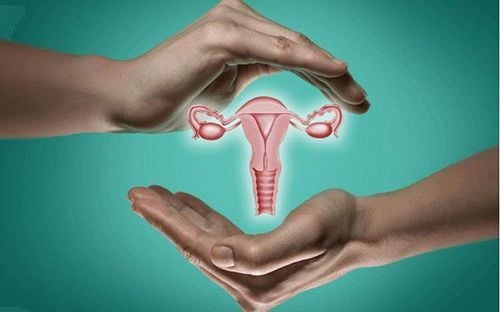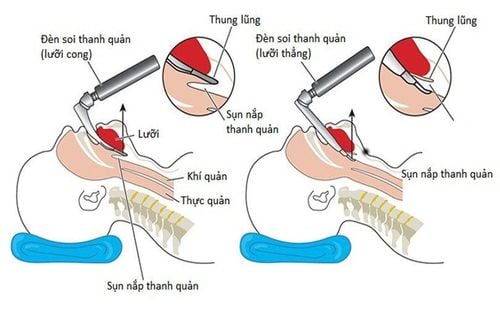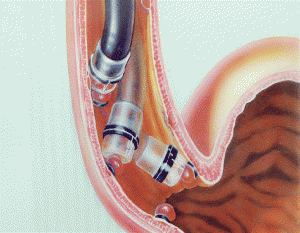This is an automatically translated article.
The article is expertly consulted by Master, Doctor Ton That Quang - Head of Anesthesia - Anesthesia Unit - Department of General Surgery - Vinmec Nha Trang International General Hospital. The doctor has more than 15 years of experience working in the Anesthesia - Resuscitation industry.Mandibular fractures are a common type of maxillofacial fracture. There are many different types of mandibular fractures, one of which is the mandibular condyle. This case often requires surgery to fuse the bones, and the anesthesia during surgery plays a very important role.
1. Mandibular condyle fracture
Mandibular condyle fracture is a common injury, especially in our country, when the number of traffic accidents is increasing and often leaves severe sequelae if not treated properly.When the mandibular condyle is broken, the patient will have some of the following symptoms:
After the injury, pain, swelling, and pain increase when moving the lower jaw, especially when chewing. The patient has limited movement of the lower jaw due to pain. Observation can see one side of the jaw deformed or swollen, with bruises due to hematoma under the skin in the area associated with the fracture. When examining and palpating the temporomandibular joint, the patient will feel a sharp pain, the doctor will see a continuous loss of bone. Intraoral examination shows gingival mucosal tears, bleeding or submucosal hematoma. Center bite is misaligned or open bite. Mandibular condyle fractures are common in three locations:
Lower condylar fracture: The fracture line is tilted downwards and behind the base of the condylar neck and is located outside the joint. The condylar segment will be pulled upward, anteriorly, and inward due to the action of the external sphenoid muscle. The ascending branch will be pulled upward and backward due to the impact of the bite muscle. Examination: When pressing between the ear flap and the condyle, the patient will feel a sharp pain in front of the ear flap. When placing two little fingers in front of the bilateral external ear canal, ask the patient to open and close the mouth to compare the movements of the two condyles. Observation in the mouth will show that the arch is deviated towards the fracture. High subcondylar fracture: The fracture line is located across the anatomical neck of the condyle in the joint. In this case, the condylar head will be dislocated inward, downward, and anteriorly due to the action of the external sphenoid muscles. Examination: found that the patient lost movement of the condyle on the broken side, pain and hematoma in front of the ear flap, opening the door joint, the jaw is deviated to the broken side, the teeth touch the joint twice, the broken side will touch sooner. Major condylar fracture: the patient has symptoms similar to a high subcondylar fracture. Often associated with fractures of the atrium, caldera, and temporal bone. Surgical treatment of mandibular condyle fractures is the best treatment for most condylar fractures. Surgery should ensure the restoration of the patient's physiological bite, to ensure the patient's ability to eat and chew later.
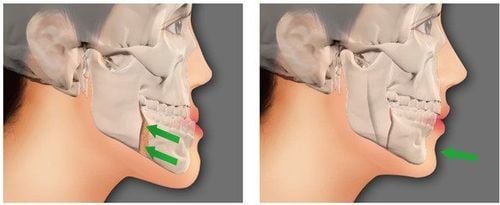
2. Endotracheal anesthesia for surgery combined with bone for treatment of mandibular condyle fractures
Endotracheal anesthesia is a technique of general anesthesia with endotracheal intubation for the purpose of respiratory control during surgery and postoperative resuscitation. Bone fusion surgery for mandibular condylar fractures also uses endotracheal anesthesia.To perform the method of endotracheal anesthesia requires medical facilities to have sufficient means and equipment for anesthesia and resuscitation. The physician must be proficient in the technique of endotracheal anesthesia.
The process of endotracheal anesthesia for surgery with bone in treatment of mandibular condyle fractures includes the following basic steps:
Checking records, examining the patient. Patient position: supine, breathe 100% oxygen at a rate of 3 - 6 l/min at least 5 minutes before induction of anesthesia. Install the monitor Set up the line If necessary, pre-anesthesia can be performed. Induction of anesthesia with: sleeping pills, analgesics, muscle relaxants. The condition to be able to put an endotracheal tube is that the patient must sleep deeply and have enough muscle relaxation. There are two techniques for intubation: Oral intubation. Intubation of the nasal passage. Check the position of the endotracheal tube for correct position by listening to the lungs. Secure the tube with adhesive tape. Maintain anesthesia. Breathe control by machine or by hand.
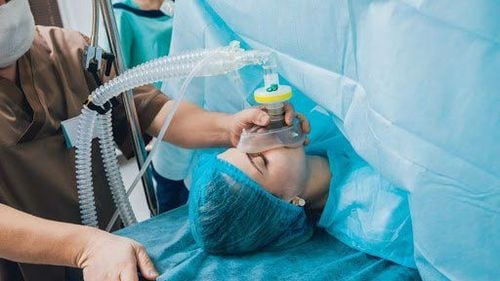
Reflux of gastric juice into the airway. In this case, it is necessary to drain the fluid immediately, let the patient lie down with the head low, tilt the head to one side. Need to monitor, prevent lung infections later. Hemodynamic disorders: hypotension or hypertension , cardiac arrhythmias (tachycardia, bradycardia, arrhythmia). Treatment depends on symptoms and causes. Accidents caused by intubation: Unable to put the endotracheal tube Wrongly placed in the stomach Stomach - tracheobronchospasm Trauma during intubation: bleeding, tooth fracture, vocal cord injury, fall foreign body into the airways,... Respiratory complications: folding, intubation of the endotracheal tube being pushed deep into one lung, retraction or opening of the respiratory system, lack of oxygen.... In this case, it is necessary to Ensure immediate ventilation and provide 100% oxygen to the patient, then find the cause and solve it. Complications after extubation such as respiratory failure, sore throat, hoarseness, laryngospasm - gas - bronchi, inflammation of the upper respiratory tract,... Depending on the complications, the doctor will have treatment methods. appropriate treatment for such complications.
Vinmec International General Hospital is one of the hospitals that strictly applies safe surgical anesthesia practice standards according to international guidelines. Vinmec has a team of experienced anesthesiologists and nurses, modern equipment such as: nerve detectors, ultrasound machines, Karl Storz's difficult airway control system, comprehensive anesthesia monitoring system GE's AoA (Adequate of Anesthesia) including monitoring of anesthesia, pain and muscle relaxation will provide high quality and safety, helping patients to have adequate anesthesia, not wake up, and do not have residual muscle relaxants after surgery.
Vinmec Health System is also proud to be the first hospital in Vietnam to sign with the World Anesthesiology Association (WFSA) towards the goal of becoming the safest hospital for surgical anesthesia in Southeast Asia.
Please dial HOTLINE for more information or register for an appointment HERE. Download MyVinmec app to make appointments faster and to manage your bookings easily.
See more:How to treat malocclusion? Harm and treatment of misaligned teeth What is malocclusion? How does it affect tooth function and facial aesthetics?






